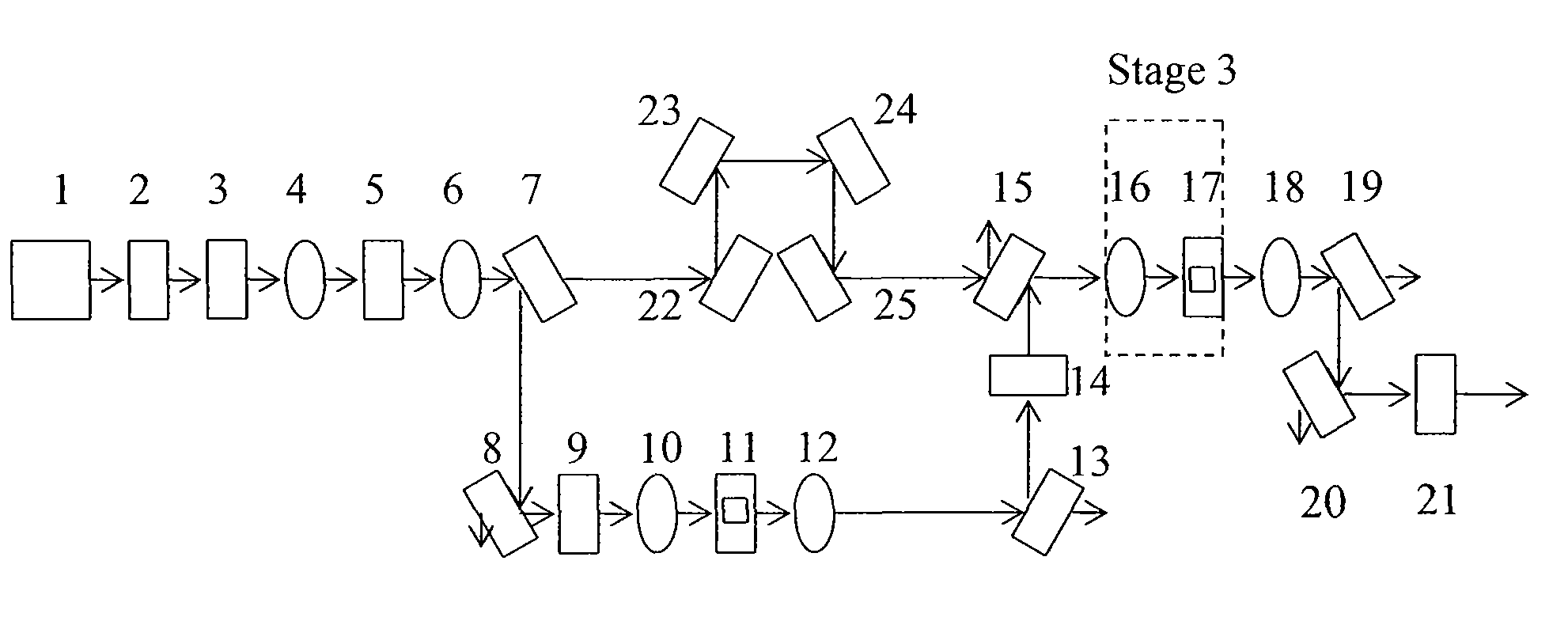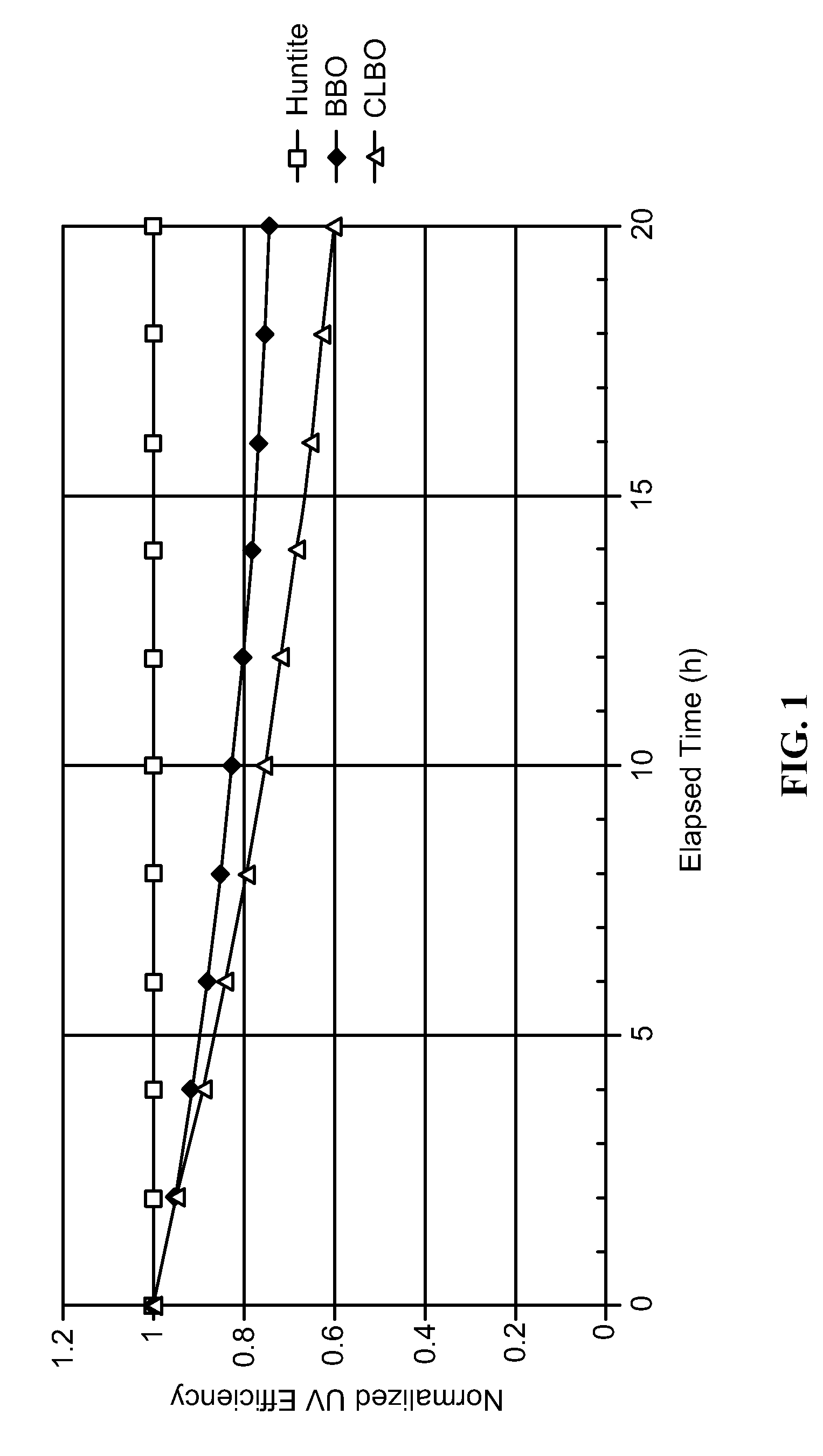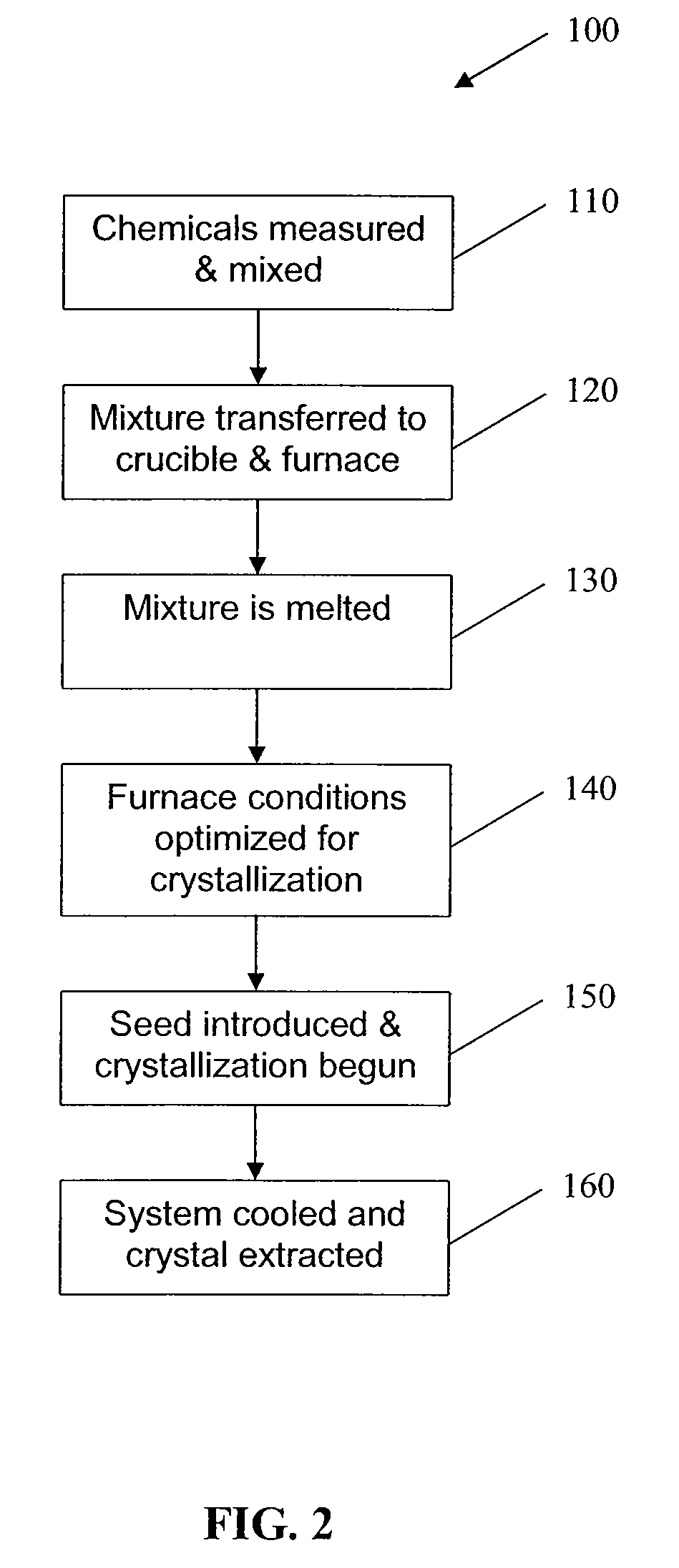Method and apparatus for pulsed harmonic ultraviolet lasers
a pulsed harmonic and ultraviolet laser technology, applied in the direction of optical resonator shape and construction, instruments, optics, etc., can solve the problems of requiring fast optomechanical control and extreme measures, significant engineering challenges, and extraordinarily difficult engineering, so as to increase the output of duv, increase the operating life and reliability, and facilitate manufacturing operations
- Summary
- Abstract
- Description
- Claims
- Application Information
AI Technical Summary
Benefits of technology
Problems solved by technology
Method used
Image
Examples
first embodiment
[0071]Embodiments of the present invention relate to an ultraviolet laser apparatus that includes one or more source lasers and one or more FC devices, where at least one such FC device is fabricated from a compositional member of the preferred materials; these constituents combine to operate as a system so as to produce QCW or pulsed UV light of 190-350 nm. In a first embodiment, the pulses from the source laser(s) have pulse durations between 1 ps and 300 ps, and the repetition rate is high enough (10 MHz to 1 GHz) to allow the output of the laser apparatus to be effectively continuous wave for a number of applications. In many instances these pulses are stretched by applying a linear chirp, the lengthened pulses are then intensified in preamplification and power amplification stages, and then compressed back down into in the low picosecond regime. This serves to increase the pulse peak power while maintaining QCW pulse repetition rates, so as to generate sufficient peak power to ...
second embodiment
[0072]In a second embodiment, a coherent pulsed UV light source with wavelengths that range between 190 and 350 nm is provided. The beam is made up of pulses of durations lying between 300 ps and 100 ns, having a pulse repetition rate of 100 kHz to 5 MHz. This pulsed laser design is comparable in average power to the QCW laser architecture, with the tradeoff being lower repetition rates for longer pulse durations.
third embodiment
[0073]In a third embodiment, for generation of higher pulse energies in pulses with durations of 1 ns to 1 μs, a specialized master-oscillator-power-amplifier source laser architecture is provided with a mode-locked seed laser and a uniform pulse rate that can be modulated to produce gated packets of pulses that are later amplified in a highly-saturated laser amplifier. By creating pulse packets that contain a plurality of shorter pulses, the laser design reduces the duty cycle over a non-modulated design, thereby boosting the pulse peak power and efficiency in subsequent FC stages.
[0074]Pulse packet repetition rates are typically 100 kHz to 100 MHz with intra-packet oscillator pulses of 10 MHz to 1 GHz. The source laser(s) used in the laser apparatus are designed to achieve peak powers typically greater than those used in frequency-converted lasers of prior art. When such a packeted pulse laser design is coupled with a UV FC stage that contains an NLO device made from the preferred...
PUM
| Property | Measurement | Unit |
|---|---|---|
| wavelength | aaaaa | aaaaa |
| wavelength | aaaaa | aaaaa |
| wavelengths | aaaaa | aaaaa |
Abstract
Description
Claims
Application Information
 Login to View More
Login to View More - R&D
- Intellectual Property
- Life Sciences
- Materials
- Tech Scout
- Unparalleled Data Quality
- Higher Quality Content
- 60% Fewer Hallucinations
Browse by: Latest US Patents, China's latest patents, Technical Efficacy Thesaurus, Application Domain, Technology Topic, Popular Technical Reports.
© 2025 PatSnap. All rights reserved.Legal|Privacy policy|Modern Slavery Act Transparency Statement|Sitemap|About US| Contact US: help@patsnap.com



